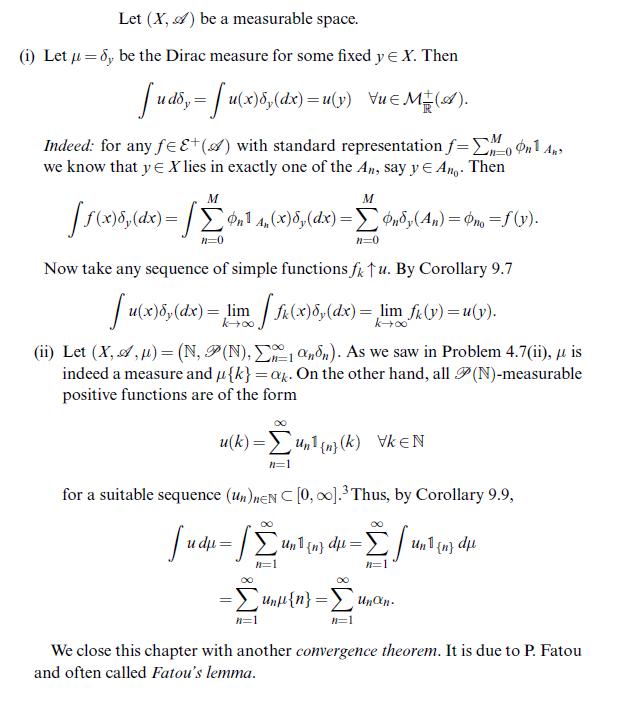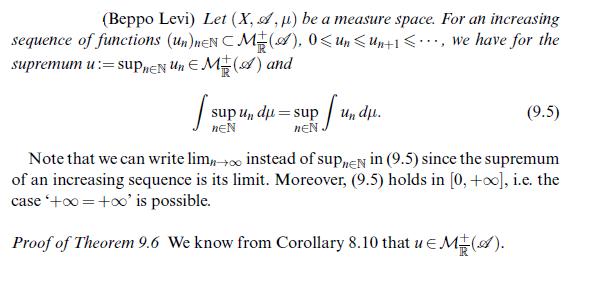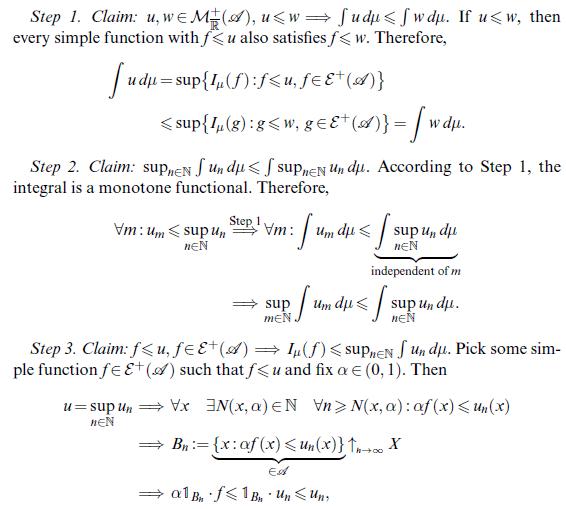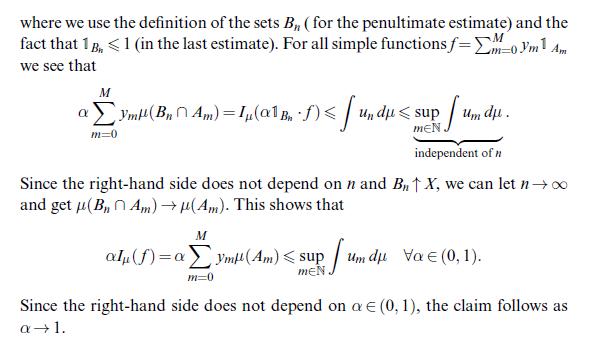Let ((X, mathscr{A})) be a measurable space and (left(mu_{n}ight)_{n in mathbb{N}}) be a sequence of measures thereon.
Question:
Let \((X, \mathscr{A})\) be a measurable space and \(\left(\mu_{n}ight)_{n \in \mathbb{N}}\) be a sequence of measures thereon. Set, as in Example 9.10(ii), \(\mu=\sum_{n \in \mathbb{N}} \mu_{n}\). By Problem 4.7(ii) this is again a measure. Show that
\[
\int u d \mu=\sum_{n \in \mathbb{N}} \int u d \mu_{n} \quad \forall u \in \mathcal{M}^{+}(\mathscr{A})
\]
[Instructions: (1) consider \(u=\mathbb{1}_{A}\); (2) consider \(u=f \in \mathcal{E}^{+}\); and (3) approximate \(u \in \mathcal{M}^{+}\) by an increasing sequence of simple functions and use Theorem 9.6. To interchange increasing limits/suprema use the hint to Problem 4.7(ii).]
Data from problem 4.7 (ii)

Data from example 9.10

Data from theorem 9.6




Fantastic news! We've Found the answer you've been seeking!
Step by Step Answer:
Related Book For 

Question Posted:





